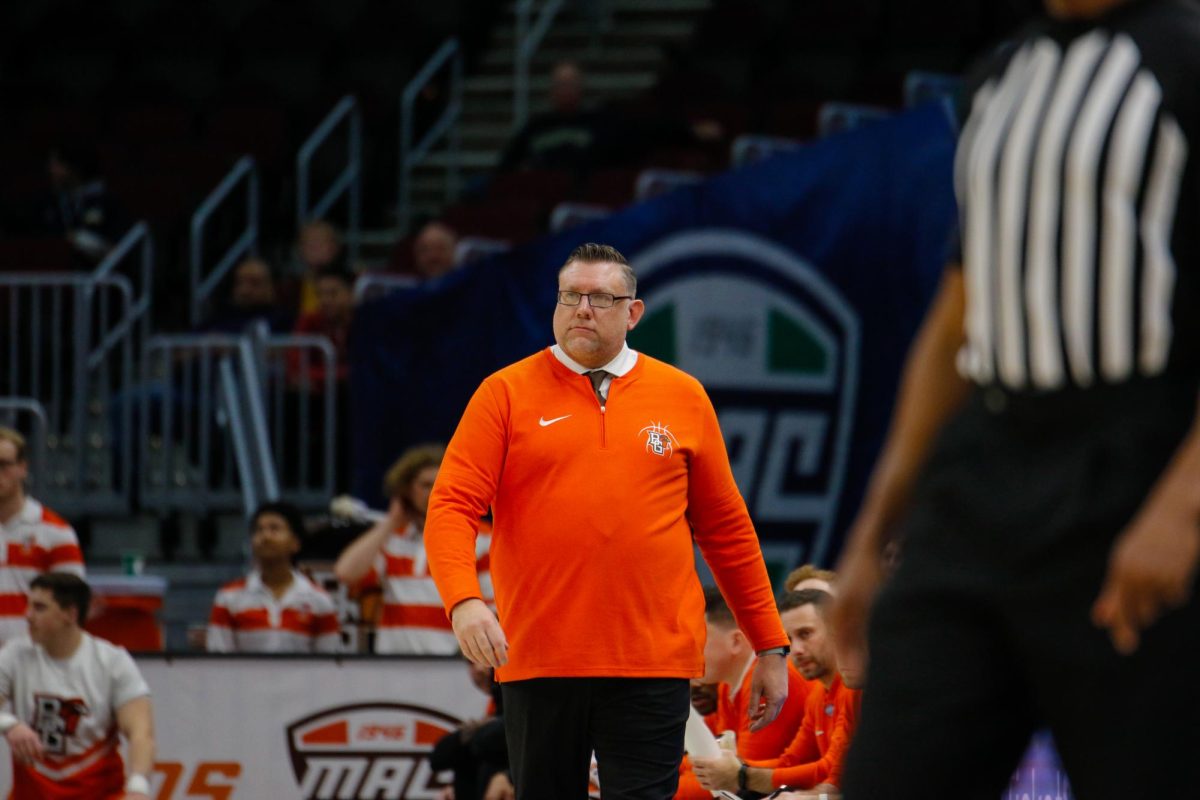Following BGSU’s winter commencement and spring graduation being months away, graduating seniors are starting to ask themselves – “What happens now?”
For most college graduates, finding employment post-grad isn’t an issue- but rather finding a job that doesn’t leave them underemployed according to data from the Pew Research Center.
This means having a job that doesn’t make use of someone’s full skills and abilities.
According to Data from the Federal Reserve Bank of New York, 41% of college graduates ages 22 to 27 were underemployed in December of 2021.
However, in addition to being underemployed- students equally find value in making sure they can find employment post-grad.
Statistics provided by the United States Census Bureau on BGSU’s website say around 47% of BGSU students find employment post-grad, ranging from major to major in the state of Ohio.
Data from The University of Toledo shows that approximately 53% of their spring graduates found employment post-grad, and similar schools such as Miami University have a post-grad employment percentage of 62% according to data from their websites.
The data from BGSU shows engineering students towering at an 84% employment rate in the state of Ohio, and the lowest rate being Philosophy and Religious Studies with a 19% employment rate.
The Chair of BGSU’s Engineering Program MD Sarder says that that number is expected to rise for BG students in the upcoming years.
“If you look at the Bureau of Labor Statistics US Department of Commerce, you can see that the engineering profession will require more people in the country, especially in our region,”
Sarder explained that BGSU has created a new engineering program that’s set to be unveiled next year- shifting from Engineering Technology to Engineering.
The new program is going to encompass more aspects of engineering design and introduce more specialties within the field, making the possibility for post-grad employment even higher than 84%.
“The engineering (classes) are coming in fall 2024. And engineering, in terms of the national trend, are not going to be less than that rate, it’s going to be even higher,” Sarder explained.
Sarder encourages students to look into the engineering program and said that despite the high employment rate and high post-grad salaries, there is still more need for engineers- especially in Ohio and in Bowling Green.
When asked about the low employment rate at BGSU, philosophy professor, Kevil Vallier, said that the data didn’t accurately reflect the success of students, or the core of the program.
He stated that most philosophy grads go into graduate or law school and that the data may not accurately represent what other options are available for students post-grad.
Vallier stated that they were “pretty clear about that internally.”
He also explained how students are not led with the expectation of having a job immediately after graduation and should look at the program as a stepping stone into something new.
He also clarified that the major he is the director of Philosophy, Politics, Economics and Law (PPEL), is not the major that is being represented in that data set, and is not the major that it refers to.
However, BGSU does offer programs for students who may be worried about post-graduate success and post-graduate employment.
Steve Russell, the Executive Director of the Kuhlin Hub Career Center and Development (CCD), says that seeking employment varies for different majors.
“For a lot of our liberal arts students, what we need to look at is actually what we would call alumni career mobility…” said Russell.
“It’s not so much the point (of) where you begin in your career, it’s how does all of that holistic experience you had in college and through your degree program really guide you to be resilient and adaptable…And that typically lands you in a really successful and healthy place,” he said.
Russell described how for most majors, connections are crucial to succeeding post-grad, and that the Kuhlin Hub CCD has just created two new features for students to expand their professional development and make connections with the companies that BGSU partners with.
Those resources include the Falcon Professional Network and Vmock, both in prototype for the university.
The Falcon Professional Network works similarly to Linkedin, but only with surrounding BGSU partners and alumni, giving students the opportunity to connect with employers that they know are interested in forming a connection.
You can access the Falcon Professional Network by clicking a link on the Michael and Sarah Kuhlin Hub for Career Design and Connections on the BGSU website.
According to the University of Southern California, Vmock is an AI platform that assists students with resume creation and career planning. They also have other features that help serve as mock interviews, and help you form and practice elevator pitches.
These programs were created in 2023 and can be found through MyBGSU in the Kuhlin Hub for Career Design and Connections tab.
For more one-on-one help, Russell recommends that students plan an appointment with Career Counselors on campus. They can be reached in person, or on the second floor of the union through scheduled appointments through Navigate.
“The goal should be to measure what your life looks like, and not just simply ‘what does the first day out of college look like?’ I think there are different ways to measure this, and I don’t think that it implies that one-degree program is better than another,” said Russell.


























